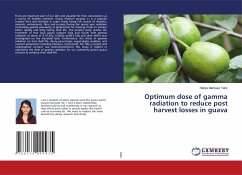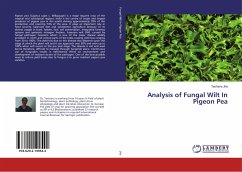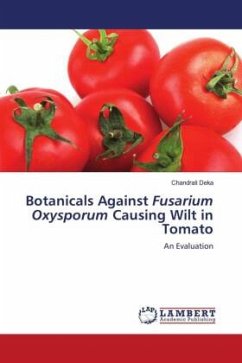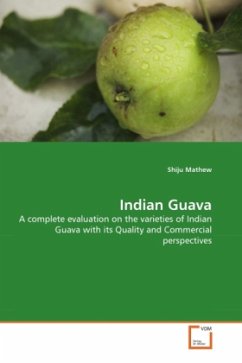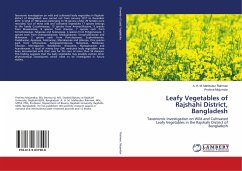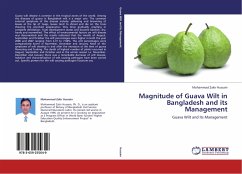
Magnitude of Guava Wilt in Bangladesh and its Management
Guava Wilt and Its Management
Versandkostenfrei!
Versandfertig in 6-10 Tagen
38,99 €
inkl. MwSt.

PAYBACK Punkte
19 °P sammeln!
Guava wilt disease is common in the tropical zones of the world. Among the diseases of guava in Bangladesh wilt is a major one. The common external symptoms of this disease include: yellowing and browning of leaves at the tip of twigs, leaves tend to shrivel and die on the trees showing fire scorched appearance; they drop gradually, resulting in complete defoliation; fruits development ceases and become blackish, dry, hardy and mummified. The effect of environmental factors on wilt disease was documented and the results indicated that the month of August, September and October the wilt percent...
Guava wilt disease is common in the tropical zones of the world. Among the diseases of guava in Bangladesh wilt is a major one. The common external symptoms of this disease include: yellowing and browning of leaves at the tip of twigs, leaves tend to shrivel and die on the trees showing fire scorched appearance; they drop gradually, resulting in complete defoliation; fruits development ceases and become blackish, dry, hardy and mummified. The effect of environmental factors on wilt disease was documented and the results indicated that the month of August, September and October the wilt percentages were higher in both the year 2006 and 2007 ranging from 4.31 to 7.06%. The wilt percentages were comparatively lower in November, December and January. Most of the symptoms of wilt develop in and after the monsoon at the time of guava flowering and fruiting. The death of highest number of plants occurred in August, September and October and in the winter season i.e. November, December and January there was a remarkable decrease of wilt disease. Isolation and characterization of wilt causing pathogen have been carried out. Specific primers for the wilt causing pathogen Fusarium oxy



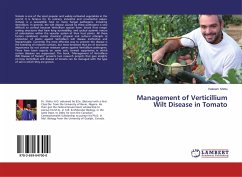
![Fusarium Wilt Resistance in Pigeonpea [Cajanus cajan (L.) Millsp.] Cover Fusarium Wilt Resistance in Pigeonpea [Cajanus cajan (L.) Millsp.]](https://bilder.buecher.de/produkte/47/47615/47615464n.jpg)
